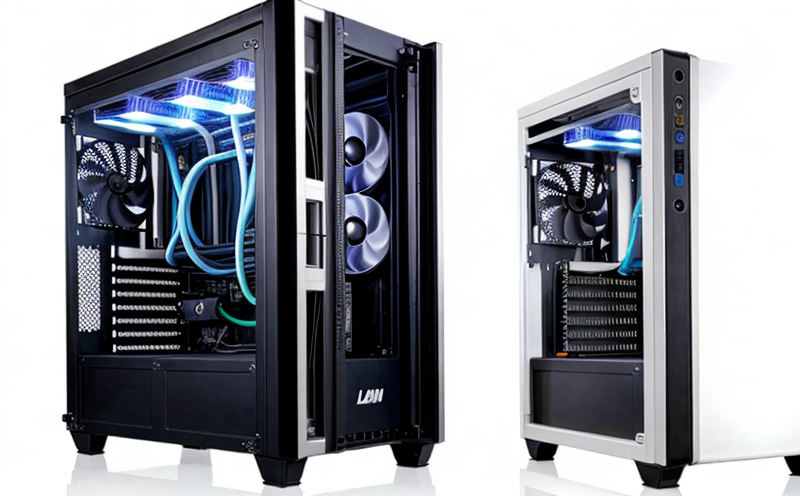ISO 13790 HVAC Energy Load Measurement
The ISO 13790 standard is a pivotal document in the HVAC (Heating, Ventilation, and Air Conditioning) industry as it provides comprehensive guidelines for measuring energy performance of HVAC systems. This testing service ensures that HVAC equipment meets stringent energy efficiency requirements, helping to reduce operational costs and environmental impact.
The process involves detailed measurements under controlled conditions, using advanced instrumentation to capture data on energy consumption. It is crucial for compliance with regulatory standards but also serves as a valuable tool for R&D teams to innovate and improve product performance. This service can be particularly beneficial for quality managers looking to ensure that their HVAC systems meet the highest standards of efficiency.
For compliance officers, ISO 13790 testing is essential in validating that products comply with relevant regulations. It also helps procurement teams select suppliers who adhere to these stringent performance metrics, ensuring long-term reliability and cost-effectiveness.
R&D engineers can leverage this service to refine their designs by identifying areas for improvement. The detailed reports generated from this testing provide insights into energy efficiency that can be used to enhance product offerings in the market.
The ISO 13790 standard covers various aspects of HVAC systems, including refrigeration units, air handling units, and heat pumps. It specifies methods for measuring and evaluating the energy consumption of these components under different operating conditions. This ensures that all equipment is tested consistently against international benchmarks.
During testing, specimens are subjected to a range of operational scenarios reflecting real-world usage. Instrumentation used includes thermal imaging cameras, power analyzers, and flow meters. These tools help in capturing precise measurements of energy performance, ensuring accurate evaluations.
The results from these tests are critical for several stakeholders within the HVAC sector. Quality managers can use this data to ensure that their systems meet or exceed industry standards. Compliance officers will find it invaluable for proving adherence to regulatory requirements. R&D teams benefit from identifying inefficiencies and optimizing designs, while procurement professionals gain confidence in selecting suppliers who produce high-quality products.
By adhering to the ISO 13790 standard, manufacturers can demonstrate their commitment to sustainability and energy efficiency, which is increasingly important for both environmental reasons and consumer expectations. The data generated from these tests not only aids compliance but also supports marketing efforts by providing measurable improvements in product performance.
The testing process begins with thorough preparation of the specimen, ensuring it reflects real-world conditions as closely as possible. Once prepared, the equipment is subjected to a series of tests designed to simulate various operational scenarios. This allows for an accurate assessment of energy consumption under different conditions.
Instrumentation plays a crucial role in this process, with thermal imaging cameras providing visual evidence of heat distribution and power analyzers measuring electrical input accurately. Flow meters are used to monitor air or water flow rates, which is essential for assessing the efficiency of HVAC systems.
The results from these tests provide detailed insights into how efficiently the equipment operates under different conditions. These findings can then be used by various stakeholders within the sector to make informed decisions about product design, compliance strategies, and purchasing practices.
Applied Standards
| Standard | Description |
|---|---|
| ISO 13790:2003 | Energy performance of buildings related to design and operation - Determination of energy use and carbon dioxide emission factors for space heating, cooling and ventilation systems. |
| ASHRAE 55-2017 | American Society of Heating, Refrigerating and Air-Conditioning Engineers Standard on Thermal Environmental Conditions for Human Occupancy. |
| EN 16798:2013 | Energy Performance of Buildings - Determination of energy use and carbon dioxide emission factors for space heating, cooling and ventilation systems. |
Quality and Reliability Assurance
The ISO 13790 HVAC Energy Load Measurement service is designed to ensure that all testing meets the highest standards of accuracy and reliability. Rigorous quality control measures are in place at every stage, from specimen preparation to final report generation. This ensures consistency across tests, providing stakeholders with confidence in the results.
Our laboratories are equipped with state-of-the-art instrumentation, ensuring precise measurements that reflect real-world conditions as closely as possible. Regular calibration and validation of instruments ensure they remain accurate over time. Additionally, our team of experienced engineers follows strict protocols to minimize human error, further enhancing the reliability of test results.
For quality managers, this service offers peace of mind, knowing that their products are being tested against international standards. Compliance officers can rely on these tests to demonstrate regulatory compliance effectively. R&D teams benefit from reliable data that helps refine and improve product designs continuously. Procurement professionals gain assurance in selecting suppliers who meet stringent performance criteria.
The comprehensive approach taken during testing ensures that all aspects of HVAC system performance are evaluated thoroughly. This includes energy consumption, thermal efficiency, and operational reliability. By adhering to these rigorous standards, we provide stakeholders with high-quality data that can be used confidently for decision-making purposes.
Customer Impact and Satisfaction
- Reduces energy costs through optimized equipment performance.
- Aids in regulatory compliance, avoiding potential fines or penalties.
- Enhances product reputation by demonstrating commitment to sustainability.
- Simplifies procurement processes by providing reliable supplier evaluations.
- Supports R&D efforts with accurate data for continuous improvement.
- Fosters trust among stakeholders, including customers and investors.





